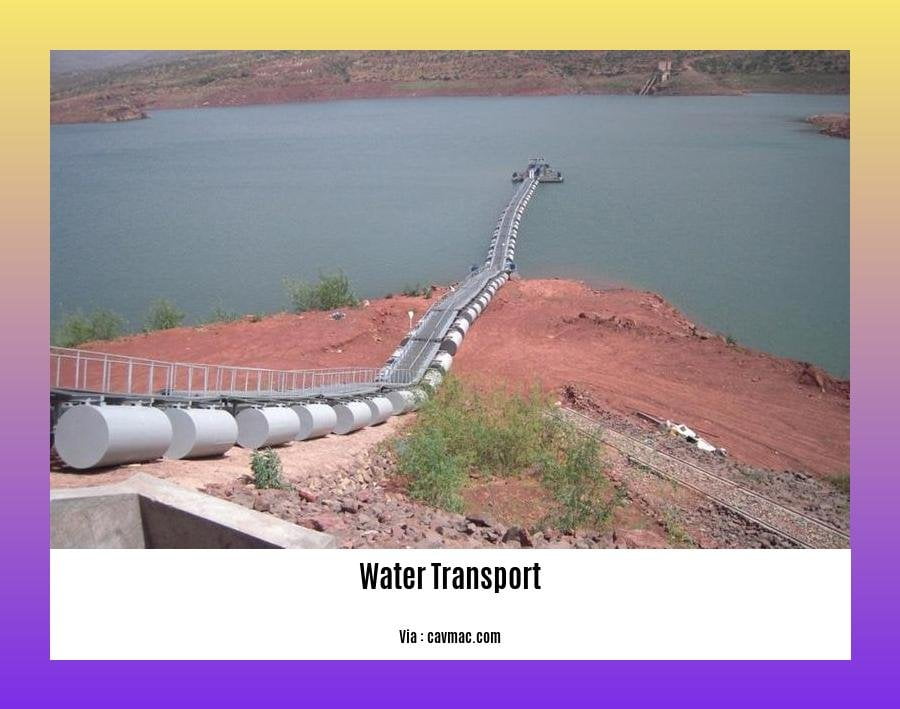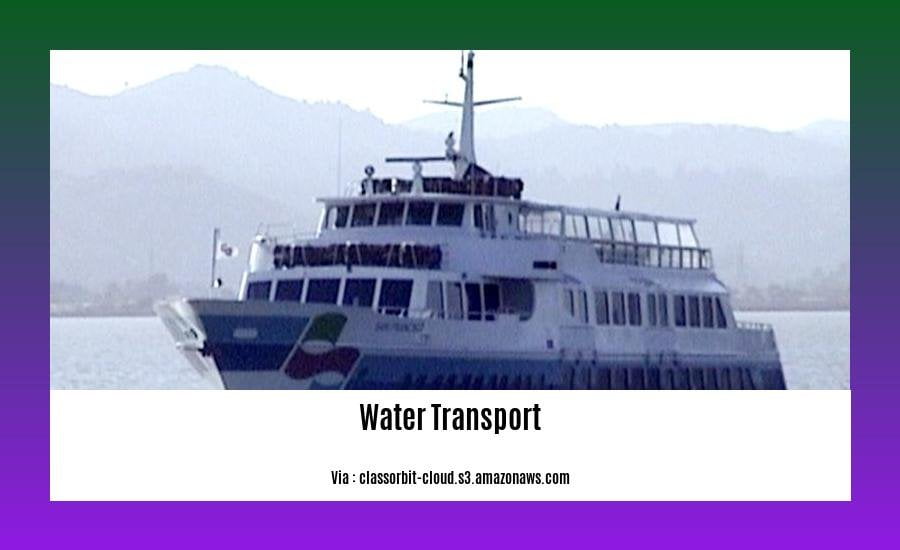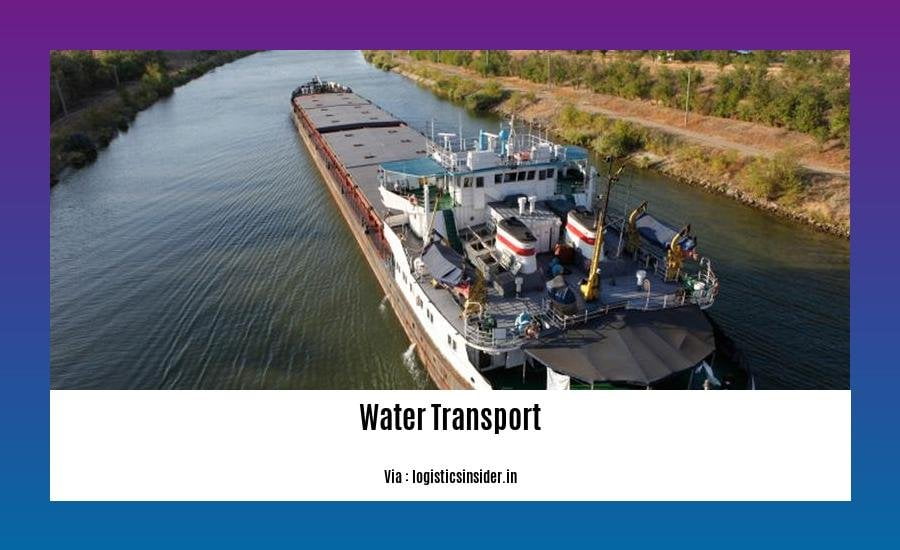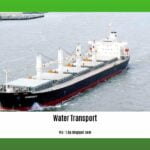When it comes to transportation in India, water transport presents a unique set of challenges and limitations. In this article, we will delve into the disadvantages of water transport in India, exploring the infrastructure challenges, limited accessibility, and seasonal limitations. By shedding light on these drawbacks, we aim to provide a well-rounded perspective on India’s transportation sector and foster a more informed understanding of the complexities involved.
Key Takeaways:
- Navigation becomes difficult during the monsoons.
- The fear of ships sinking is always a concern.
- Water transport is a slow means of transportation.
- It is not suitable for small businesses.
- Goods have to be loaded at specific places due to differences in depth and water volumes.
Disadvantages of Water Transport in India

Water transport, while having its advantages, also comes with various disadvantages in the context of India’s transportation sector. In this article, we will explore the challenges, accessibility issues, and limitations faced by water transport in India.
Navigation Challenges during Monsoons
One of the major hurdles of water transport in India is navigating through the waterways during the monsoon season. The heavy rainfall and strong currents often make it difficult for ships and boats to maneuver safely. This poses a threat not only to the transporters but also to the cargo being transported. The fear of ships sinking or encountering accidents due to the unpredictable weather conditions is a persistent concern, making water transport less reliable in certain periods of the year.
Slow Means of Transport
Compared to other modes of transportation, water transport is generally slower in terms of speed. Ships and boats have to contend with factors such as tidal movements, currents, and the need to navigate through narrow channels. Due to these limitations, water transport is not the most suitable option for time-sensitive deliveries or urgent transportation needs. It is commonly used for heavy and bulk cargo, which do not require immediate delivery.
Limited Accessibility for Small Businesses
Water transport, particularly through rivers and canals, may not offer adequate accessibility for small businesses located in landlocked areas or regions without well-developed waterway infrastructure. This lack of accessibility can pose significant challenges for small enterprises, hampering their ability to transport goods efficiently and cost-effectively. As a result, these businesses may have to rely on alternative modes of transportation, which could be more expensive or less feasible.
Loading Constraints due to Depth and Water Volumes
Another disadvantage of water transport in India is the requirement for goods to be loaded and unloaded at specific places due to variations in depth and water volumes in different waterways. This can create logistical challenges for transportation operators, especially when dealing with cargo that needs to reach multiple destinations or requires frequent loading and unloading. The need for specialized infrastructure and handling facilities adds an extra layer of complexity and cost to the transportation process.
In conclusion, while water transport has its advantages in certain situations, it also faces several disadvantages in India. The navigation challenges during monsoons, slow speed, limited accessibility for small businesses, and loading constraints due to depth and water volumes are a few key drawbacks of water transport in the country. It is essential to consider these disadvantages when evaluating the suitability of water transport for specific transportation needs.
Transportation management systems have their own set of challenges and drawbacks. Click here to discover the disadvantages of using a transportation management system.
When it comes to transportation, there are several drawbacks to consider. Explore the downsides of the transportation system by clicking here.
Water transport may seem like an efficient option, but it also has its downsides. Uncover the disadvantages of water transport by clicking here.
Seasonal Limitations
As we delve into the disadvantages of water transport in India, it is important to highlight one significant challenge that this mode of transportation faces – seasonal limitations. The seasonal nature of rivers and waterways poses restrictions on the navigability and efficiency of water transport throughout the year.
Limited Navigability Throughout the Year
Many rivers in India are seasonal and do not offer navigability on a year-round basis. This means that water transport can only be operational during specific seasons, leaving long periods of time where it becomes impractical or even impossible to rely on this mode of transportation. The fluctuating water levels due to seasonal changes create barriers to the smooth and continuous operation of water transport.
During the monsoon season, heavy rainfall and strong currents make it extremely challenging to navigate through the waterways. The unpredictable weather conditions and frequent floods further disrupt the regular flow of water transport, making it risky and unreliable.
Key Takeaways:
– Seasonal limitations restrict the navigability of water transport in India, posing challenges to its continuous operation.
– The monsoon season with heavy rainfall and strong currents makes it extremely challenging to navigate through the waterways.
– Unpredictable weather conditions and frequent floods further disrupt the regular flow of water transport.
By understanding the seasonal limitations of water transport in India, we can gain a more comprehensive view of its disadvantages and the constraints it presents in terms of accessibility and continuity. It is crucial to consider these limitations when evaluating the suitability of water transport for specific transportation needs in India.
Sources:
– Trivedi, A., Jakhar, S.K., & Sinha, D. (2021). Analyzing Barriers to Inland Waterways as a Sustainable Transportation System in India. ScienceDirect. Link
– Indiatimes: Link
High Costs: Exploring the Disadvantages of Water Transport in India

Water transport in India has its fair share of disadvantages, one of which is the issue of high costs. While water transport offers some advantages, such as the availability of natural infrastructure and low running and maintenance costs, it also presents financial challenges that can make it less attractive for certain transportation needs. In this article, we will delve deeper into the high costs associated with water transport in India and shed light on why it may not always be the most cost-effective option.
Financial Burdens and Logistical Challenges
One of the main factors contributing to the high costs of water transport in India is the need for intensive capital and maintenance dredging. Developing and maintaining inland waterways requires significant financial investment and ongoing upkeep. Dredging is essential for ensuring that waterways remain navigable, but it comes at a substantial cost. These financial burdens can pose challenges for the effective implementation and sustainability of water transport systems.
Limited Navigability and Inadequate Infrastructure
Another aspect that adds to the high costs of water transport in India is the limited navigability throughout the year. Some rivers in India are seasonal, which means they do not offer consistent navigability. This limitation restricts the potential for water transport and necessitates the presence of alternate transportation modes during certain periods. Additionally, the inadequate infrastructure for water transport in many areas further compounds the challenges, as it requires additional investment to improve and expand the waterway network.
Accessibility and Operating Expenses
Accessibility is also a concern when it comes to the high costs of water transport in India. Small businesses, particularly those in landlocked areas or regions without developed waterway infrastructure, may face limited accessibility for water transport. The lack of connectivity can make it challenging for these businesses to effectively utilize water transport, which may lead to higher operating expenses as they rely on alternative modes of transportation.
Seasonal Limitations and Time Sensitivity
Furthermore, water transport in India is often affected by seasonal limitations. Navigating through waterways becomes difficult during the monsoons, when heavy rainfall and strong currents pose significant challenges. The seasonal nature of water transport can result in disruptions and delays, especially for time-sensitive deliveries. When time is a critical factor, other modes of transportation may be more efficient and reliable, albeit potentially more expensive.
Key Takeaways:
- Water transport in India can be hindered by high costs, which include intensive capital and maintenance dredging expenses.
- Limited navigability throughout the year and inadequate infrastructure pose challenges and add to the financial burden of water transport.
- Small businesses in areas with underdeveloped waterway infrastructure may face accessibility issues, leading to higher operating expenses.
- Seasonal limitations, such as the monsoon season, can disrupt water transport and make other modes more suitable for time-sensitive deliveries.
Sources:
1. Trivedi, A., Jakhar, S.K., & Sinha, D. (2021). Analyzing Barriers to Inland Waterways as a Sustainable Transportation System in India. ScienceDirect. Link.
2. Praveen Sarvan (2015). Key Issues & Challenges for Inland Water Transportation Network in India. ResearchGate. Link.
Key Takeaways:
- Limited navigability throughout the year and the need for intensive capital and maintenance dredging pose challenges for inland water transportation in India.
- Inadequate infrastructure, marginalized sectors, and the absence of a comprehensive national water transportation policy hinder the development of inland waterways.
- The potential benefits of inland water transportation include its environmental friendliness and lower carbon footprint.
Environmental Impact
Water transport has gained recognition as an environmentally friendly mode of transportation due to its lower carbon footprint and the natural infrastructure available in India. However, the disadvantages of water transport in India must also be considered, particularly in terms of the environmental impact.
Infrastructure Challenges and Limited Accessibility
Inadequate depth in many parts of the waterways poses a major barrier to the commercial movement of cargo, restricting the usability of waterways for transporting goods. This issue not only hinders the development and utilization of inland waterways but also contributes to the under-utilization of water transportation compared to other large countries. The need for ongoing capital and maintenance dredging presents financial and logistical challenges, further impeding the sustainability of water transport.
Seasonal Limitations and Regulatory Frameworks
Seasonal variations and floods affect the navigability of rivers, making it difficult to ply boats during torrential water currents. This limited navigability throughout the year restricts the potential of inland water transport in India. Additionally, the lack of a comprehensive national water transportation policy hampers the sector’s growth, as development can only happen on an ad hoc and piecemeal basis. Uncertainty in cross-border connectivity, such as the protocol for inland waterways between Bangladesh and India, requires extension to improve coordination and efficiency.
Addressing the Challenges for a Sustainable Future
To address these challenges and promote the sustainable development of inland waterways in India, several measures need to be taken. This includes developing and maintaining sufficient depth throughout waterways, investing in adequate infrastructure, and formulating comprehensive national water transportation policies. Moreover, addressing issues related to regulatory frameworks, financial investments, and the integrated development approach is crucial.
By understanding and addressing these barriers, India can harness the potential benefits of water transport while mitigating its disadvantages. Achieving a well-rounded and sustainable transportation sector requires a comprehensive approach that takes into consideration the environmental impact, alongside the economic and logistical aspects.
Sources:
- Trivedi, A., Jakhar, S.K., & Sinha, D. (2021). Analyzing Barriers to Inland Waterways as a Sustainable Transportation System in India. ScienceDirect.
- IASKS. (n.d.). “Key Issues/Challenges for Inland Water Transportation Network.”
FAQ
Q1: What are the main disadvantages of water transport in India?
A1: The main disadvantages of water transport in India include navigation difficulties during the monsoon season, the fear of ships sinking, slow transport speed, limited accessibility for small businesses, and the need to load goods at specific locations due to differences in depth and water volumes.
Q2: How does the monsoon season affect water transport in India?
A2: The monsoon season poses a challenge for water transport in India as navigation becomes difficult. Heavy rainfall and turbulent water currents during this season make it unsafe for ships to operate, reducing the efficiency and reliability of water transport.
Q3: Why is water transport not suitable for small businesses in India?
A3: Water transport in India may not be suitable for small businesses due to various factors. Small businesses often have limited quantities of goods to transport, and water transport requires larger vessels and a more extensive infrastructure. Additionally, the need to load and unload goods at specific places adds complexity and may not be cost-effective for small-scale operations.
Q4: How does depth and water volumes impact water transport in India?
A4: Differences in depth and water volumes in various waterways in India can limit the operation of water transport. Some areas may have shallow waters, making it challenging for ships with larger drafts to navigate. As a result, goods may have to be loaded and unloaded at specific points where the water depth is suitable, which adds logistical challenges and may increase transportation costs.
Q5: What is the overall speed of water transport in India?
A5: Water transport in India is generally considered a slow means of transportation compared to other modes such as railways or roadways. Factors such as the need to navigate through waterways, potential congestion, and the impact of weather conditions can contribute to slower travel times for goods and passengers transported by water.
- Unveiling the Enigma: Mansoureh Khojasteh Bagherzadeh’s Public Appearances & Private Life in Iran - July 18, 2025
- Unveiling the Mystery: Mansoureh Khojasteh Bagherzadeh’s Husband: A Rare Glimpse into a Private Life - July 18, 2025
- Unveiling Masoud Khamenei’s Mother: Power, Influence, and Iran’s Future - July 18, 2025
















